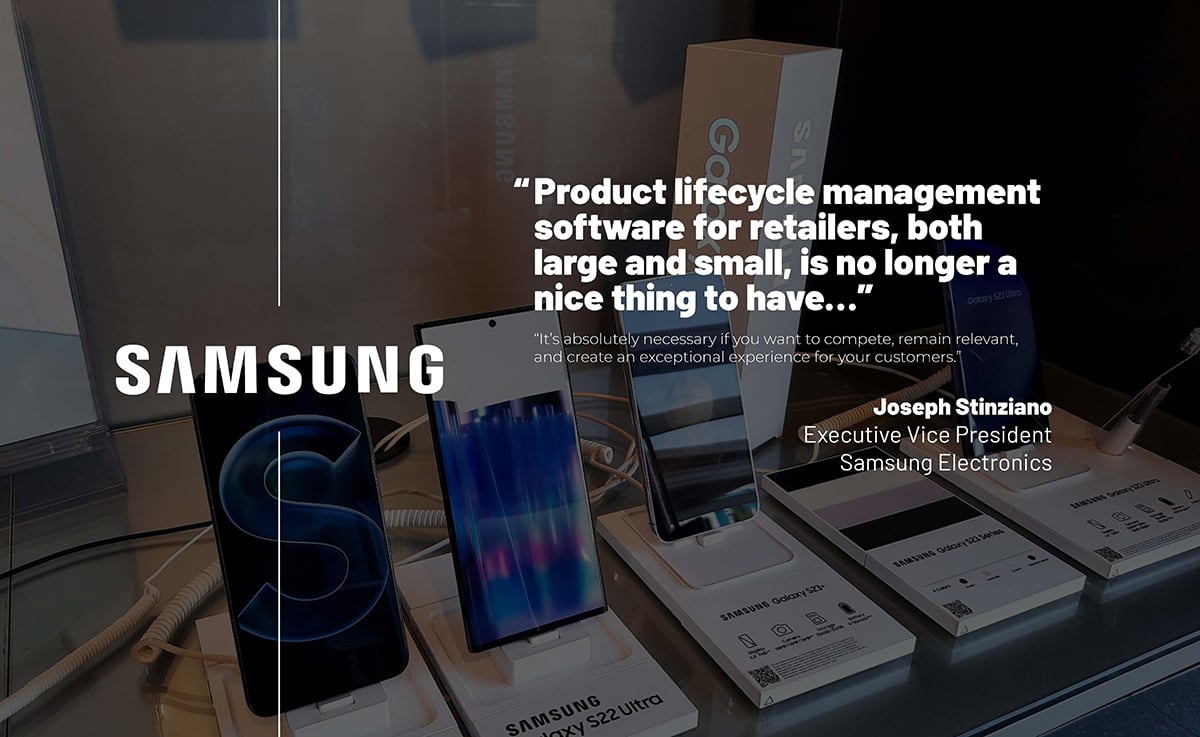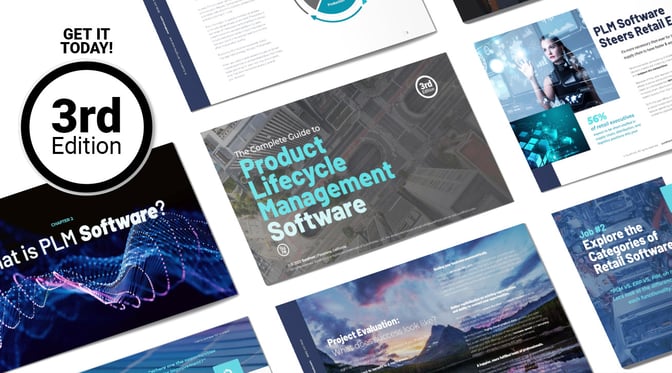Share this
What is PLM Software?
by Surefront on Apr 3, 2024 2:58:40 PM
Home > Blog > What is PLM Software?
Table of Contents
- PLM software enables unified collaboration
- PLM software steers retail evolution
- PLM software gets results
Product lifecycle management (PLM) software enables collaboration between all stakeholders in the product development process. This collaboration is made possible because PLM software integrates product data, workflows, and systems on a central platform.
PLM software enables unified collaboration
The many parties involved in the product development process must be able to collaborate in real time. These parties can be separated into internal teams and external stakeholders:
Internal Teams
|
External Stakeholders
|
Most PLM software is designed to enable internal collaboration only. However, the best PLM systems enable collaboration between internal and external stakeholders. Surefront’s PLM system, for example, allows external teams to access product data and specifications in real time on a unified platform.
External collaboration is crucial because most errors and setbacks in the product development process occur due to miscommunication. Despite this fact, many product collaborators are still passing product data around in PDFs and spreadsheets over email.
With so many teams working in tandem on the same project, it’s easy for crucial details to be lost in transmission. These issues can lead to underwhelming final products and major delays. This problem is what PLM software is designed to solve.
PLM software steers retail evolution
Decision-makers involved in product collaboration are finding it more necessary than ever to adopt technologies that automate and simplify communication. This need is becoming ever more pressing as 56% of retail executives expect to be short-staffed in supply chain, distribution, and logistics positions.
PLM technology has rapidly become a critical investment for retailers looking to streamline their infrastructure, reduce operating costs, and reduce time to market. Getting products to market quickly and effectively enables retailers to capitalize on emerging trends.
Fashion designers, for example, require a seamless and speedy go-to-market process to capitalize on new styles. Being last to the finish line in the fashion race can spell death to the bottom line. That’s why businesses leveraging technology to speed products to market are primed to be trendsetters rather than table scrap scavengers.
PLM software gets results
PLM software drives results by making collaboration between internal and external stakeholders seamless. There are three key results businesses can expect to see after successful PLM software implementation.
Lower production costs
Communication errors kill production efficiency. What happens if the wrong spec sheet is sent to the manufacturer? Communication errors tend to have cascading effects across multiple teams. It usually all leads back to a small error—something as simple as sending the wrong PDF.
On a PLM platform, your product data stays in one place, so everyone is always on the same page.
Faster time to market
Sending hundreds of spreadsheets whizzing around over email is nowhere near as efficient as performing all steps of product collaboration in the same place. Instead of everybody working in a silo, a PLM platform puts real-time product data at everybody’s fingertips. This vastly improves communication and efficiency, cranking up product development speed.
Greater product quality
As all stakeholders become fluent in the PLM collaboration process, it becomes easy to keep everybody aligned. Improved alignment means making strategic adjustments is not a problem. All stakeholders are working on the same page, so there will be fewer mistakes and better product outcomes.
Key takeaways
PLM software gives businesses the power to work on a unified collaborative platform. Leveraging this platform makes it possible to eliminate mistakes and stay ahead of the game.
As mistakes decrease and efficiency grows, PLM adopters see lower production costs, faster time to market, and improved product quality. That’s why PLM systems are quickly becoming a necessary tool in the product development toolbelt.
To take an even deeper dive into this topic, please download the third edition of our Complete Guide to Product Lifecycle Management.
See the next article in our PLM series on why retail teams should take PLM software seriously.
Related Articles
Leveraging PLM Software for Efficient Workflow Management
PLM & PIM Solutions Drive Sales in 2023
PLM, ERP, CRM, PIM … Oh My! Demystifying Retail Software Terminology
Share this
- PLM Software (36)
- PIM Software (29)
- Apparel & Fashion (20)
- Trending Topics (20)
- Merchandising (16)
- CRM Software (13)
- PLM Implementation (11)
- Catalog Management (6)
- Tech Packs (6)
- PLM RFP (5)
- Success Stories (5)
- Sustainability (5)
- Data Import (4)
- Line Sheet (4)
- Luxury Goods & Jewelry (4)
- Product Development (4)
- Retail (4)
- Supply Chain (4)
- Category Management (3)
- Home Furnishings (3)
- Wholesale (3)
- Consumer Packaged Goods (CPG) (2)
- Cosmetics (2)
- Data Export (2)
- Health & Beauty (2)
- RFQ & Quote Management (2)
- Consumer Electronics (1)
- Import & Export (1)
- Industry Events (1)
- Inventory Management (1)
- Pet Stores (1)
- Purchase Orders (1)
- Report Builder (1)
- Textiles & Raw Materials (1)
- Unified Solution (1)
- Vendor Management (1)
- Visual First (1)
- White Paper or Case Study (1)
- workflow (1)
- October 2025 (3)
- September 2025 (3)
- August 2025 (4)
- April 2025 (4)
- March 2025 (3)
- January 2025 (8)
- December 2024 (5)
- November 2024 (3)
- October 2024 (5)
- September 2024 (6)
- August 2024 (2)
- July 2024 (1)
- June 2024 (3)
- May 2024 (4)
- April 2024 (5)
- March 2024 (3)
- February 2024 (2)
- December 2023 (4)
- September 2023 (2)
- August 2023 (5)
- July 2023 (3)
- June 2023 (2)
- May 2023 (2)
- April 2023 (4)
- March 2023 (5)
- February 2023 (3)
- January 2023 (5)
- December 2022 (4)
- November 2022 (3)
- October 2022 (4)
- September 2022 (5)
- August 2022 (4)
- July 2022 (2)
- May 2022 (1)
- February 2022 (1)
- January 2022 (1)
- September 2021 (1)
- May 2021 (1)
- April 2021 (1)
- February 2021 (1)
- May 2020 (1)


